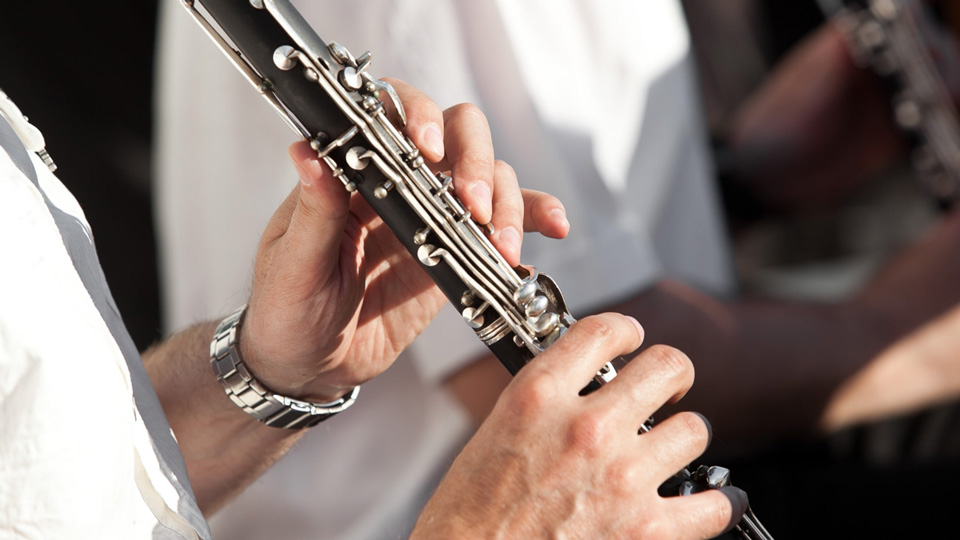Top Tips: Testing a Clarinet Mouthpiece
16th August 2021Here at Dawkes we often assist players when choosing a new Clarinet mouthpiece to help improve their sound and response. Whenever testing it’s important to follow some simple steps to make sure you’re really testing the mouthpiece fairly and to ensure you make the right choice.
In this short video and blog we give you our Top 5 tips for testing Clarinet mouthpieces…
1. Try the mouthpiece on your own instrument
This may sound obvious, but we do sometimes have players come to the store to test clarinet mouthpieces without their own instrument. Trying out new mouthpieces on your own instrument ensures you’re limiting the amount of variables in the test. You already know how your instrument responds and sounds, as such it will help determine just what difference the new mouthpiece is making.
2. Compare against your own mouthpiece
The idea of any change of mouthpiece is fundamentally to improve your current set-up. As such, it needs to out-perform your own current mouthpiece. Try a variety of styles of music and exercises and always consider “is this mouthpiece playing/feeling better than my current one?” – The answer needs to be “YES!” to make the change.
3. Try it with an ‘appropriate’ new reed
Firstly, always try new mouthpieces with a new reed. Your old/current reeds will have ‘bedded’ in to the facing of your current mouthpiece meaning it will not sit perfectly on any new mouthpiece. As such, we always recommend trying new mouthpieces with a new reed.
Secondly, that new reed needs to be the ‘appropriate’ one for that new mouthpiece. For example, if you’re looking at mouthpieces that have a wider tip opening than you currently play (eg Vandoren B45 vs 5RV), you may find that your normal reed strength feels quite hard on that new model. This is because the more open mouthpiece requires more of the reed to flex and thus you have to work harder on the same strength. Therefore if you are trying more open mouthpieces then you may want to try a 1/2 strength softer than you usually play. Conversely if you’re trying a mouthpiece with a smaller/closer tip opening you may need to go 1/2 strength stronger.
The other consideration with reed strength is the facing length. If for example, you compared two mouthpieces with the same tip opening size but one had a short facing and the other had a long then the same reed would feel very different. Short facing lengths make a reed feel harder, and long facings make the same reed feel softer. If you need help with these points please do contact us for further information.

4. Test the tuning & overall range
The internal bore size of a mouthpiece will affect the tuning across the whole range of your Clarinet. As such different designs suit some different Clarinet models better. We recommend warming up for 5-10 mins first, then tuning your instrument (with a good digital tuner – ideally not your phone) to a concert A. If the mouthpiece is correct for your Clarinet you shouldn’t have to pull way out or struggle to get that concert A to pitch.
When your concert A is pitched perfectly test up chromatically and then in arpeggios to get a feel for the tuning across intervals. We all understand it’s not possible for any Clarinet to be perfectly in tune across the whole range due to the science of how they are made, but you’re looking to keep things in manageable tuning ‘zones’.
One example of how the mouthpiece interior can change the pitch of your instrument is that most standard Vandoren mouthpieces are pitched at A442 whereas the ’13 series’ are pitched at A440. Although we generally play at A440 in the UK some ensembles tune a little sharper to ‘brighten’ the sound, and it’s always relevant to the internal bore of your Clarinet design. So – the point to take away is that you should always be attentive to tuning when trying new mouthpieces. If in doubt ask a member of our team for help with what model will suit your Clarinet.
5. Try it in an environment you know
In general we supply mouthpieces to people trying in the shop, or to people trying at home via mail order. Ideally you’d get some time with 1 or 2 models in an environment that you are familiar with, i.e. where you know how your set-up normally sounds.
If you’re coming in to the shop to try we have a variety of testing rooms with different acoustics that you can book in advance. If you then end up picking 1 or 2 favourites you can then take those home on 14 day approval to try them in your own environment. You simply return the ones you don’t want for a refund (less £3 re-sticking fee).